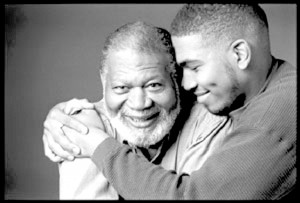More Americans care for elderly relatives, but who cares for the caregivers?
6th February 2017 · 0 Comments
By Encarnacion Plye
Contributing Writer
(Special from Columbus Dispatch/New America Media) — The United States needs to do more to help the tens of millions of caregivers who sacrifice their finances, health and personal lives to look out for aging loved ones, a growing number of experts say.
Nearly 18 million people care for a relative 65 or older who has health or functional impairments, according to a report from the National Academies of Science, Engineering and Medicine. This does not include people who assist family and friends in nursing homes.
 Drop the age of those being cared for to 50 or older and the number climbs to 35 million nationally and 1.4 million in Ohio, according to AARP.
Drop the age of those being cared for to 50 or older and the number climbs to 35 million nationally and 1.4 million in Ohio, according to AARP.
Family caregivers are estimated to save the government more than $500 billion a year nationally, and $16.5 billion in Ohio, reports have stated.
But with older adults making up the fastest-growing population and living longer than ever before, there’s a growing gap between the demand and supply of family caregivers, experts warn.
Trump Urged on Caregiving Strategy
By 2030, nearly 73 million U.S. residents — more than one in five — will be at least 65, the National Academies’ report found. And the proportion of older adults most likely to need intensive support — those in their 80s and beyond — is projected to climb from 27 percent in 2012 to 37 percent in 2050.
“If the needs of caregivers are not addressed, we, as a society, are compromising the well-being of elders,” said Richard Schultz, a psychiatry professor at the University of Pittsburgh who led the committee that created the National Academies’ report.
The report calls on the new presidential administration to create a national strategy in 2017 that better supports family caregivers. It is one of many efforts, in the nation and in Ohio, aimed at improving conditions.
“Caregiver support, increasing awareness and reducing isolation all play a role in ensuring that older adults who live in the community are safe from abuse, neglect and exploitation,” said Christine Mulvin, program officer at the HealthPath Foundation of Ohio, which recently teamed up with another Cincinnati-based group, Interact for Health, to conduct a state poll on the issue.
About half of Ohio adults provided unpaid help to an older relative or friend who was at least 60 years old in the past year, she said. While men and women were equally likely to have provided care, people with higher incomes and those ages 46 to 64 were more likely to do so.
In its surveys, AARP Ohio found that a higher percentage of women (61 percent) tend to be caregivers, matching several national studies. The typical caregiver, the group found, also is over the age of 55, married and college educated. The average age of the person they care for is 79 years old.
The median duration that family members care for an older adult with high needs is five years, according to the National Academies’ report.
So it should come as no surprise that family caregiving often carries significant financial or personal burdens, Schultz said.
They often have higher rates of anxiety, chronic disease, depression and stress, according to the report.
And it’s not uncommon for caregivers to cut back on their own expenses, reduce their work hours or quit their jobs to balance caring for their families at the same time they’re helping an aging loved one.
Emotional, Financial Chaos
Susan Culbertson’s mother, Rebecca, was diagnosed with Alzheimer’s disease in 2010 and, later, pancreatic cancer. Although the diagnoses prompted the Zanesville resident to spend time with her mother that she still cherishes, it wasn’t without challenges.
“The last year of her life was so chaotic financially and emotionally for me,” said Culbertson, 68, who suffers from chronic fatigue syndrome. It got so bad, her specialist at the Ohio State University’s Wexner Medical Center warned her that her own health was sliding because of the work and worry.
And as her mother’s Alzheimer’s worsened, so did the cost of her care, which kept Culbertson up nights.
“I watched every penny, used coupons for adult diapers, personal-care products,” said Culbertson who paid for everything other than her mother’s assisted-living bill. “We were to the point of having spent every dollar that my parents had saved for their care in their later years.”
Her mother died in July 2015 at the age of 86, just before Culbertson would have had to find a new place for her to live.
The National Academies’ report recommends that health care workers and existing programs such as Medicare, Medicaid and veterans’ health care are trained to identify family caregivers who might need help. It also suggests that government leaders explore new financial supports for caregivers, such as enhanced leave programs or tax or Social Security credits. Even something small would help ease the burden, Culbertson said.
The Ohio legislature recently passed the Ohio Caregiving Act, sponsored by Sen. Peggy Lehner, a Kettering Republican, and Rep. Sarah La Tourette, a Republican from Bainbridge Township in northeastern Ohio, both of whom have cared for loved ones. The act requires the name of family caregivers to be recorded when a loved one is admitted to a hospital. It also ensures they are notified at discharge and given instructions for any medical tasks they’ll have to perform at home.
Caregiving Complexities
About 70 percent of Ohio caregivers perform complex medical tasks with equipment, such as feeding and drainage tubes, catheters and tracheotomies, according to AARP, which proposed the legislation. Only half currently receive training.
“Information is power, and the Ohio Caregiving Act will empower Ohio’s family caregivers,” who up to now have mostly been invisible, said Barbara Sykes, AARP’s state director.
The timing couldn’t have been better, since almost everyone is affected, said Trey Addison, an associate state director with AARP in Ohio, who worked with lawmakers on the caregiver issue.
“Families have finally gotten recognition, which makes me hopeful for more good things in the future,” Culbertson said.
Encarnacion Pyle wrote this article for Ohio’s Columbus Dispatch with the support of a journalism fellowship from New America Media, the Gerontological Society of America and AARP.
This article originally published in the February 6, 2017 print edition of The Louisiana Weekly newspaper.



